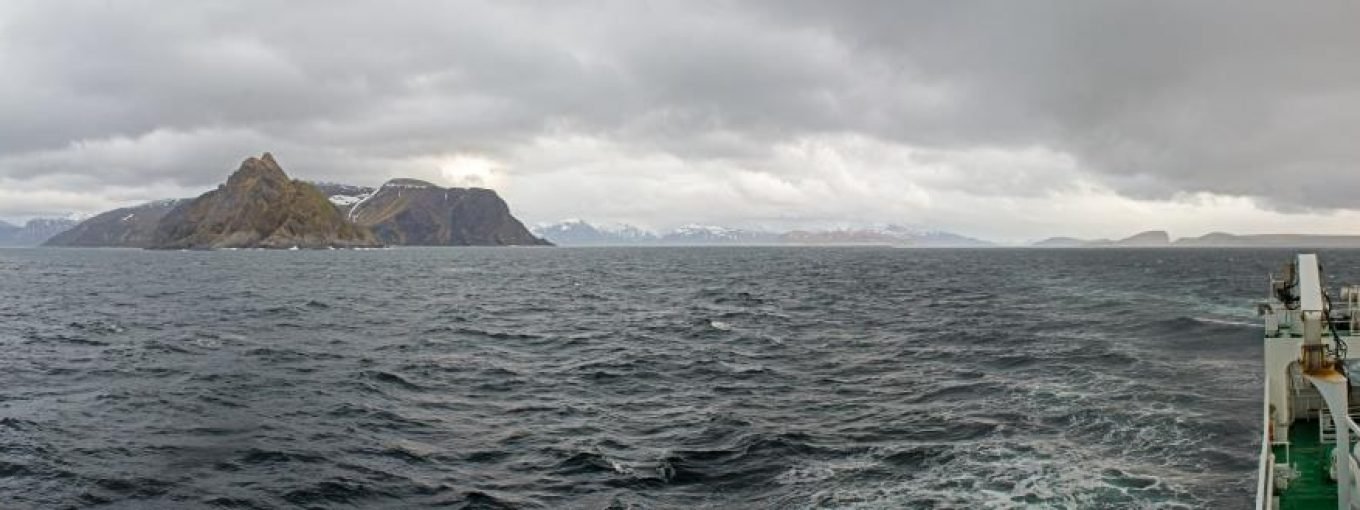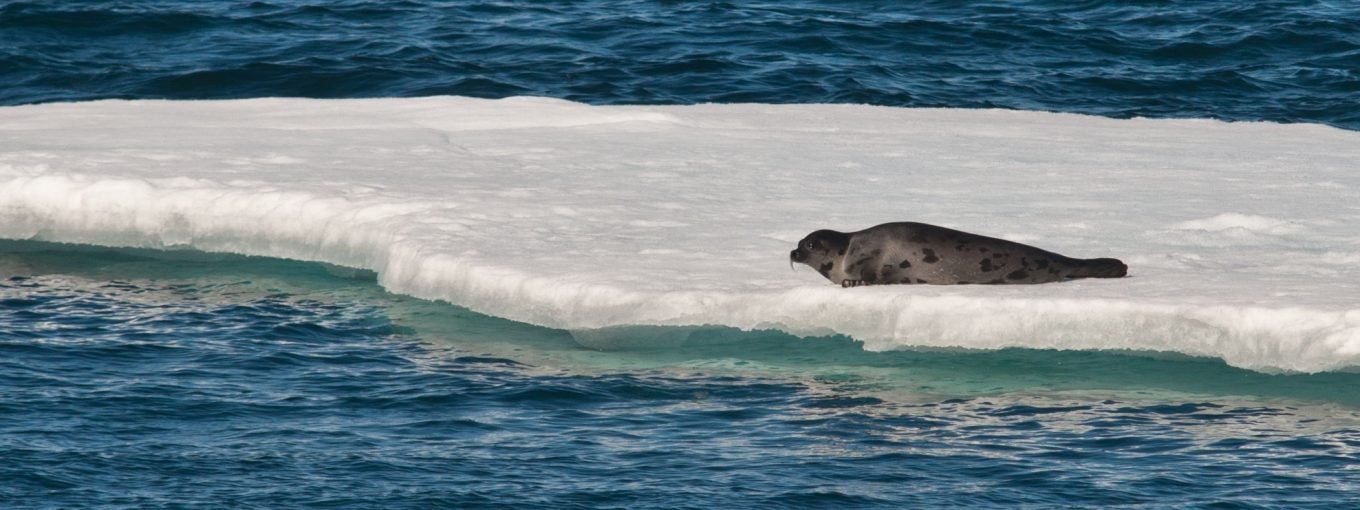The main goal of the Changing Arctic Ocean Programme is to understand how the Arctic Ocean functions in a quantitative way. This information feeds into models that determine how the Arctic Ocean will react to change. These future projections are important because they help refine decision-making processes.
The Arctic Ocean is a vastly complex system with poorly understood interactions between the physical environment, defined by the presence of sea-ice and extreme annual seasonal cycles, and the ecosystem and biogeochemical cycles. To model this system in any meaningful way necessitates a solid understanding of key aspects of the ecosystem and the biogeochemical cycles that operate in the Arctic Ocean. This is an inherent component of the 16 projects in the Programme, which are generating the data to test and develop the computer models further.
The models used in the programme are diverse in terms of the spatial and temporal scales they cover, the components of the marine system they are aiming to replicate, and the research questions they address. A summary of the models is presented below.
More information about the models applied in the individual projects is available in the project pages.
| Model | Type | Spatial domain | Project | Contact |
| BFM-SI (Biogeochemical Flux Model – Sea Ice) | Coupled one-dimensional sea ice thermodynamics-biogeochemical model | Single-point model | Diatom-ARCTIC | Letitzia Tedesco |
| BRNS | Diagenetic Model (benthic reaction-transport model) | Barents Sea shelf and slope | ChAOS | Sandra Arndt |
| “BRNSlight” | Numerically efficient encapsulation (ANN) of the BRNS for regional applications/ coupling to pelagic models | Barents Sea shelf and slope, and planned Pan-Arctic | ChAOS | Sandra Arndt |
| Coltrane | Individual-based, trait-based representation of Calanus complex | Pan-Arctic | DIAPOD | Neil Banas |
| Dynamic life history model for C. finmarchicus | Dynamic life history model | Norwegian and Greenland Seas | CHASE | Geraint Tarling, Jennifer Freer |
| ERSEM | Biogeochemical model of lower trophic levels of both benthic and pelagic environments | Lena and Kolyma River estuaries and near shore (Russia Arctic and East Siberian Shelf)
0D process studies in PETRA, but can be run in 3D at all scales |
CACOON
|
Ricardo Tores
|
| EwE (Ecopath and Ecosim) | EwE is a marine ecosystem modelling software suite | Coastal and pelagic surface water ecosystem | EISPAC | Silvana Birchenough |
| FESOM (Finite Element Sea ice Ocean Model) | Coupled sea-ice–ocean model | Global | Eco-Light | Giulia Castellani |
| FRUITS | Bayesian diet and foodweb estimation model | Iceland | LOMVIA | Thomas Larsen |
| FVCOM | Unstructured grid finite volume hydrodynamic model | Lena and Kolyma River estuaries and near shore (Russia Arctic and East Siberian Shelf) | CACOON | Ricardo Tores |
| GFR (General Functional Response) | Resource selection function | Iceland | LOMVIA | Jason Matthiopoulos |
| Individual based model for C. finmarchicus and T. inermis | Individual based model | Range of C. finmarchicus and T. inermis | CHASE | Jürgen Groeneveld and Bettina Meyer |
| MEDUSA-2 | Biogeochemical; component of UK Earth System Model and coupled OGCMs | Variable (global, regional, 1-D) | APEAR ARISE PRIZE Coldfish DIAPOD |
Katya Popova Clive Trueman Andrew Yool |
| NEMO-MEDUSA-2 | Global coupled OGCM with Bio-Geo-Chemistry | Global and Pan-Arctic | APEAR | Yevgeny Aksenov Katya Popova Andrew Yool |
| NEMO-PISCES | Complex biogeochemical model, focus on isoscape | Global/Pan-Arctic | ARISE | Alessandro Tagliabue |
| OSB-EcoM (Optimality Size Based Ecosystem Model) | 1D (vertically resolved) lower trophic food-web model with biogeochemistry; focus on linking physiological- and ecological processes with biogeochemical element cycling of C and N (possibly P); forcing and physical variables from NEMO | Fram Strait | Micro-ARC | Markus Schartau and Ben Ward |
| CLADACH (Consensus model of Light and Algal Dynamics under Arctic Change) | NPZD (biogeochemical, focus on plankton) | Lagrangian testbeds on Barents, Bering, Chukchi shelves | PRIZE PEANUTS |
Neil Banas and Fabian Groβe |
| REcoM (Regulated Ecosystem Model) | Ocean biogeochemical model, cell-quota | Pan-Arctic, applied to Beaufort Gyre | Eco-Light | Giulia Castellani |
| Seal population models | Individual-based, statistical | East Greenland, Barents Shelf | ARISE | Sophie Smout |
| StrathCal | Spatial demography of a copepod population | Range of C. finnmarchicus | DIAPOD | Dougie Speirs |
| StrathE2EPolar | Functional group nitrogen mass dynamics – nutrients, detritus, bacteria to mammals food web model | Two domains: Barents Sea, and East Greenland Shelf, each with coarse vertical and horizontal resolution | MiMeMo | Mike Heath |
| SCHISM-ECOSMO E2E | Fully coupled Physical-Biogeochemical model including functional groups for P,Z,Fish and Macrobenthos | Atlantic-Arctic (including Barents Sea, Fram Strait) | MiMeMo | Ute Daewel |
| SIMBA (Sea Ice Model for Bottom Algae) | Sea ice biogeochemical model, NPD, Redfieldian | Pan-Arctic, applied to Beaufort Gyre | Eco-Light | Giulia Castellani |
| Synthesis analysis | Spatial domain | Project | Contact |
| Calanus lipid pump estimation | North Atlantic – Arctic Basin | DIAPOD | Mike Heath and Sigrún Jónasdóttir |
| Horizontal and vertical carbon fluxes through the plankton | TBD | ChAOS DIAPOD PRIZE |
Christian März Neil Banas |
| Isoscape models – statistical and mechanistic models of CNS isotopic variability | Barents Sea | Coldfish | Clive Trueman |
| Spatial models of ecosystem metrics (benthic pelagic coupling strength, food chain length, trophic niche) | Barents Sea | Coldfish | Clive Trueman |








